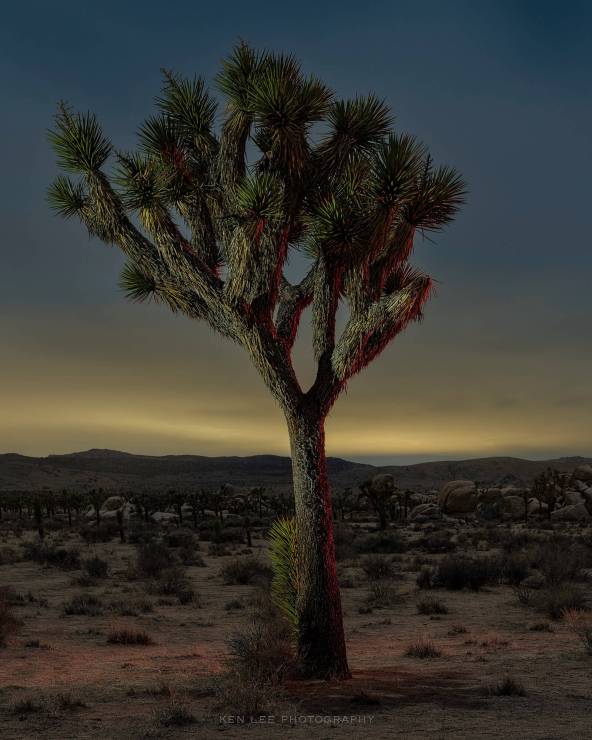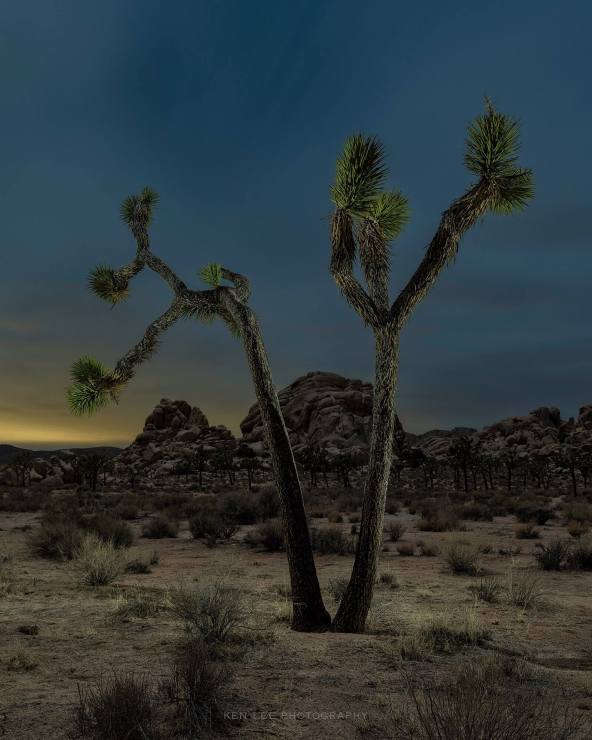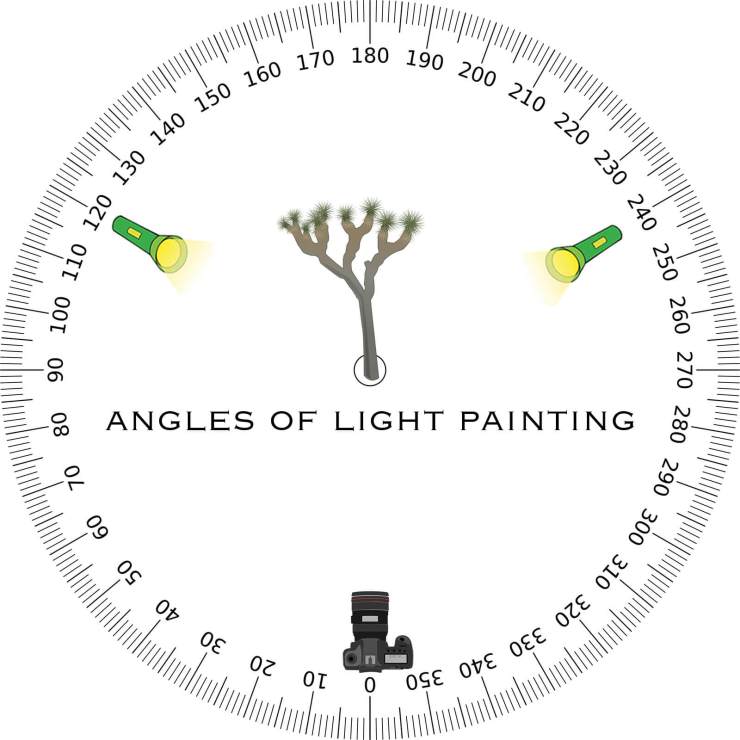I wanted to create a soft but detailed illumination on a couple of Joshua tree photos. I’ll breakdown how I created this look in Joshua Tree National Park so you can do it in three easy steps!
A special place

I went into Joshua Tree National Park to take photos of, well, Joshua trees. I often refer to JTNP as my spiritual home for night photography. This is where it began for me.
Cloudy with a chance of …?
However, the Clear Outside app called for close to 100% high clouds and about 60% middle clouds. These would largely obscure the moon. However, I was not going to stay away.
When I got there, sure enough, it was cloudy. But there was still some Moonlight shining through, the clouds acting like Mother Nature’s largest softbox. Furthermore, the light diffused some of the glow from Coachella Valley and the moon, creating some interest. This could work!

I decided that I wanted the light to almost seem like it was wrapping around the trees (well, they’re not really trees, but you know …). Here’s how I went about lighting the Joshua trees in these two photos!
1. Lighting the left side
After focusing on the Joshua trees in each of the photos, I lit the trees from the left side at 120 degrees to the camera with a warm white light. I stood about 20–25 feet away so the light would be really soft but still be detailed. I kept the handheld light, a ProtoMachines LED2, moving so there wouldn’t be any hot spots.
2. Lighting the right side
I then walked over to the other side of the tree. This time, I was at 240 degrees to the camera. Again, I was about 20–25 feet away to soften the light. For one of the photos, I decided to caress it with a little bit of red light, just for good measure.

3. Lighting the ground
I then swept the ground with a warm white light for each of the photos. This helped to create a little bit more texture, since the light was otherwise rather flat and dark.
Other details
For each of the photos, I used a Pentax K-1 camera with a 28-105mm f/3.5-5.6 zoom lens. I shot for two minutes, at f/8 and ISO 200. I kept the ISO low so I had enough time to walk around and light the trees, but also so I could use a slightly dimmer light from farther away to keep the lighting soft while still retaining details.
These Joshua trees have an enormous amount of character. Keeping the detail is often very important to me so it retains their personality.
I’ll add that these photos were taken one right after another without any attempts! Niiiice!
Tell your story with the second annual Visual Storytelling Conference!
Experience four days of interactive, online training sessions featuring a range of educational content with experienced photographers and content creators. This free event kicks off with a series of technical boot camps to build essential skills, followed by live, online sessions on photography, video, business and social media. Join live from March 10-13, 2022!
